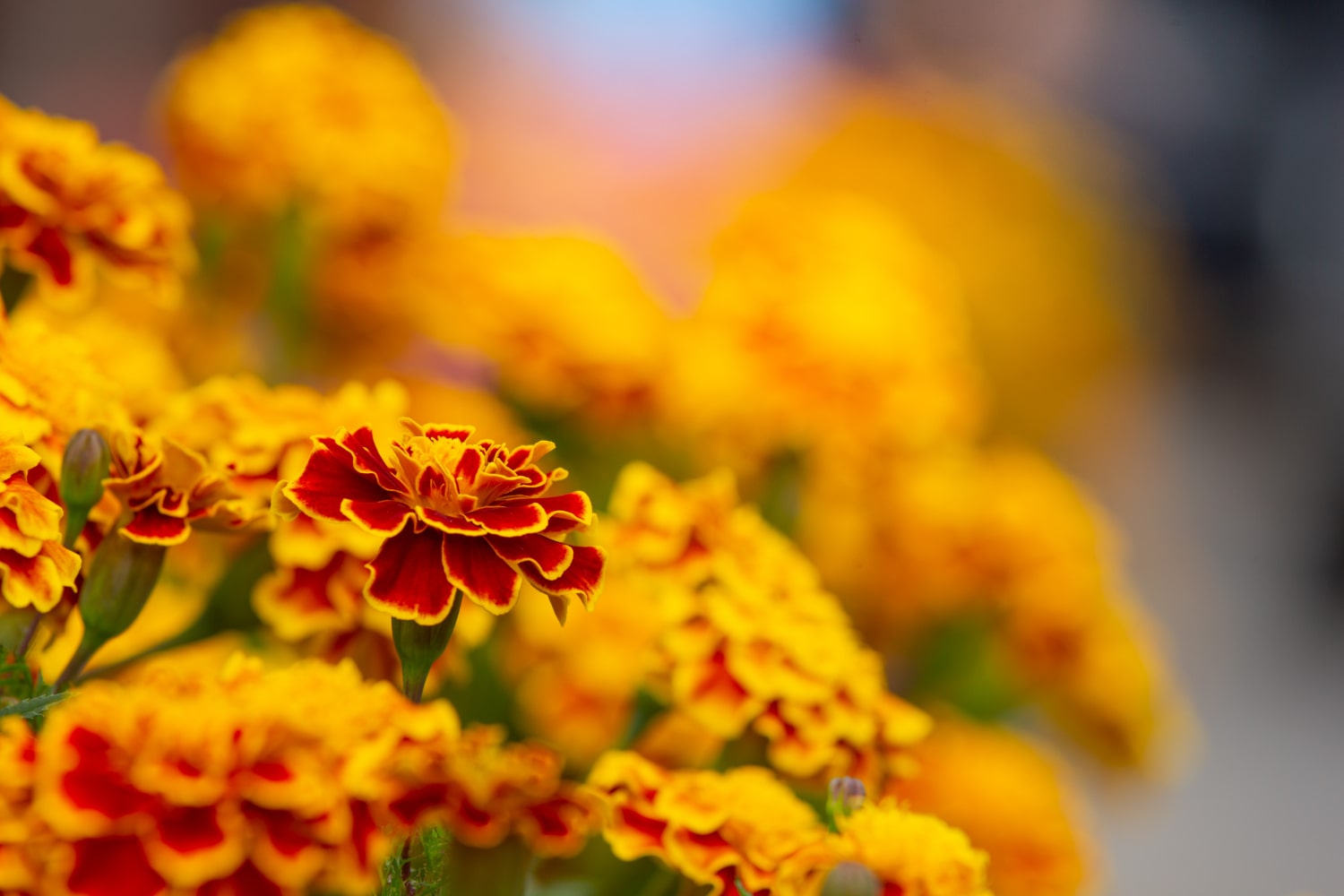Marigolds are vibrant flowers known for their striking colors, distinctive scent, and impressive resilience. While often associated with ornamental garden beds, their significance goes far beyond aesthetics. These flowers are used in folk medicine, cooking, agriculture, and even in cultural traditions as symbols of warmth, protection, and remembrance. In countries like Poland and Ukraine, marigolds have emotional and poetic associations, representing maternal love and memories of home. Here is a collection of fascinating and educational facts about marigolds you may not have known.
- The name marigold is believed to refer to the velvety texture of the petals and the rich, warm tones of certain varieties. Many cultivars feature dark-edged petals contrasting with bright orange or golden centers. This vivid appearance makes them popular in landscape design.
- Marigolds originate from Central and South America, especially Mexico. They were introduced to Europe in the 16th century by Spanish explorers. Today, they are grown worldwide and often considered native in many regions due to their adaptability.
- The botanical name for marigolds is Tagetes, named after the Etruscan deity Tages, a symbol of wisdom and prophecy. There are more than 50 known species, but the most widely cultivated are French marigold (Tagetes patula), African marigold (Tagetes erecta), and signet marigold (Tagetes tenuifolia). Each species varies in height, flower shape, and scent.
- Marigolds produce a strong aroma that repels many insect pests. Gardeners often plant them alongside vegetables such as tomatoes, cucumbers, and cabbages for natural pest control. They are especially effective against aphids, nematodes, and whiteflies.
- The leaves and flowers of marigolds contain essential oils with antiseptic and anti-inflammatory properties. These oils are used in pharmaceuticals, cosmetics, and aromatherapy. Infusions made from petals are traditionally used to treat eye conditions and digestive issues.
- Some species, like Tagetes minuta, are used as culinary herbs. Known in South America as Peruvian basil or aniseed marigold, this plant has a spicy aroma. Its leaves are added to meats, sauces, and marinades for flavor.
- Marigolds are highly drought- and heat-tolerant. This makes them ideal for urban landscapes, balconies, and low-maintenance gardens. They are easy to grow and suitable for beginner gardeners.
- In agriculture, marigolds are valued as natural soil enhancers. Their roots release compounds that suppress harmful nematodes and soil fungi. Planting them between crop rows improves soil health and can increase yields.
- Marigold seeds are easy to collect and store. They are elongated with a dark body and a light tip. One plant can produce hundreds of seeds that remain viable for up to three years.
- In traditional medicine, marigold tea is used to relieve cold symptoms, improve digestion, and calm the nervous system. Dried petals are brewed into a gentle, aromatic tea often sweetened with honey or lemon. It is known for its soothing effect and pleasant flavor.
- Marigolds have cultural significance as symbols of love, family, and nostalgia. In Ukraine, they are immortalized in the beloved song “Chornobryvtsi,” which evokes memories of a mother’s care and the warmth of home. These flowers carry emotional resonance across generations.
- Dried marigold petals are used in decorative crafts and natural dyeing. They are included in floral artworks, eco-printing, and handmade products. The vibrant color is long-lasting, even in dried form.
- In beekeeping, marigolds serve as a valuable nectar source late in the season. Although not primary honey plants, they attract bees when few other flowers are in bloom. The resulting honey has a golden hue and a rich, aromatic flavor.
- Marigolds are often used in schools to teach basic plant hybridization. Students observe crossbreeding and create new flower color combinations. This hands-on experience nurtures curiosity and respect for the natural world.
- In various cultures, marigolds represent the sun, life, and spiritual connection. In Mexico, they are a central part of Día de los Muertos celebrations, symbolizing remembrance and the cycle of life. Their bright petals are believed to guide spirits back to the world of the living.
Marigolds are much more than decorative plants. They combine beauty, practicality, and deep cultural meaning. These interesting facts show how versatile and significant these familiar flowers truly are. You may not have realized how much value and wonder can be found in the simple marigold.





